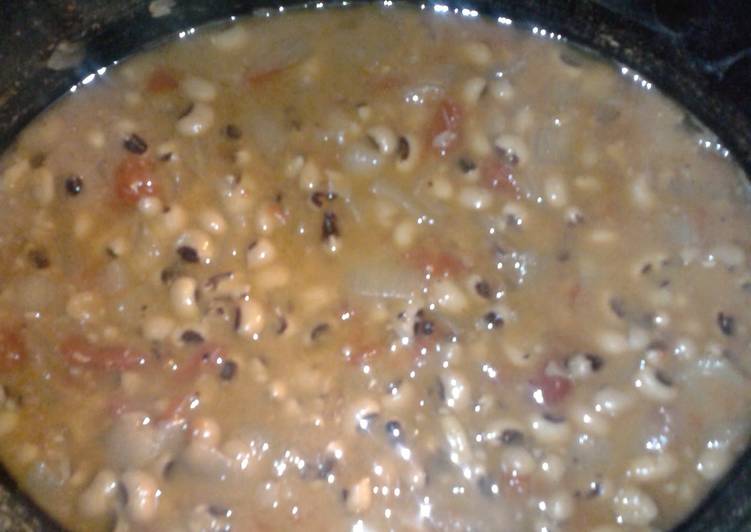Crock pot black eyed peas. This is a must make recipe for New Years. This Crockpot Black Eyed Peas recipe is full of flavor and one of the best I have ever tasted! They are also a perfect use for that left over ham bone!
 Pour the water into a slow cooker, add the bouillon cube, and stir to dissolve.
Combine the black-eyed peas, onion, garlic, bell pepper, jalapeno pepper, ham, bacon, cayenne pepper, cumin, salt, and pepper; stir to blend.
Many feel that salt and acidic ingredients slow the softening.
You can have Crock pot black eyed peas using 12 ingredients and 4 steps. Here is how you cook that.
Pour the water into a slow cooker, add the bouillon cube, and stir to dissolve.
Combine the black-eyed peas, onion, garlic, bell pepper, jalapeno pepper, ham, bacon, cayenne pepper, cumin, salt, and pepper; stir to blend.
Many feel that salt and acidic ingredients slow the softening.
You can have Crock pot black eyed peas using 12 ingredients and 4 steps. Here is how you cook that.
Ingredients of Crock pot black eyed peas
- Prepare of Easy.
- Prepare 3 tbsp of minced garlic.
- It's 1 tbsp of crushed black and red pepper.
- You need 1/2 cup of water.
- Prepare 1 can of diced tomatoes 14.5 oz.
- It's 1 large of onion diced.
- Prepare 1 bunch of salt/pepper.
- It's 1 can of chicken broth (14.5 oz.
- Prepare 1 lb of dried black eye peas.
- You need 1 tbsp of onion powder.
- You need 1 dash of seaaon salt.
- You need 1 tbsp of garlic powder.
Drain the peas from the soaking liquid and place in the crock pot. Add the water, salt and pepper, onion, celery, and meat. How to make Black Eyed Peas in a Crock Pot. Then pour tomatoes over black eyed peas and add garlic, water, bouillon, peppers and stir well.
Crock pot black eyed peas instructions
- soak peas for a hour.
- the water in the peas should go above the peas and that's the water you will be using instead of the 1/2 cup.
- add all ingredients DRAIN DICED TOMATOES and cook in Crock pot all day. Start on low then 2 hours later put on high 3 hours later switch to low and let go, stir occasionally!.
- I didn't measure any of the ingredients I eyeballed them.
Nestle ham bone down in black eyed peas, season with salt and pepper and cover. Yes, omit the bacon and ham. When the cooking time is up, remove the ham hocks, shred the meat (discard fat). This crock pot black-eyed peas and ham is an easy dish to make and goes perfectly with a side of cornbread. This can be caused by salt or acidic ingredients, the hardness of the water used for cooking, or the age of the peas or beans.